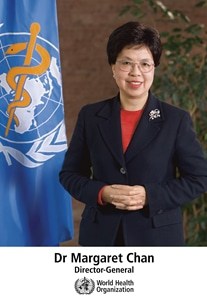 The World Health Organization is urging countries worldwide to invest in fighting 17 neglected tropical diseases, according to an official news release.1 The organization released a progress report showcasing that many neglected tropical diseases are in fact petering out, but that increased efforts could not only eradicate these diseases, but also better the health of more than 1.5 billion people worldwide. This is particularly important in the field of pharmacy technology, as much of this investment will involve increasing current prevention and treatment methods as well as developing new means of deterring tropical diseases. According to Business Insider, tropical diseases, such as dengue fever and leprosy, kill more than 500,000 people across the globe each year.2 Currently, the WHO notes that people in about 150 countries are affected by such diseases, meaning that they are no longer necessarily isolated to tropical regions.1 The diseases listed by the WHO include rabies, trachoma, dengue fever, yaws, leprosy, buruli ulcer, sleeping sickness, chagas disease, guinea-worm disease and river blindness, among others.1 While many of these diseases are a common risk in African countries, they also affect people in across the rest of the world, including the U.S. In the news release, Dr. Dirk Engels, director of the Neglected Tropical Diseases Department at the WHO, explained, “Some of the neglected tropical diseases are no longer strictly tropical. The potential for spread provides yet another strong argument for making the needed investments – while ramping up research and development efforts – to bring all these diseases under control and eliminate as many of them as rapidly as possible.”1 Neglected tropical diseases are particularly harmful to poor populations that may not have easy access to prevention and treatment. WHO Director-General Dr. Margaret Chan stated, “Increased investments by national governments can alleviate human misery, distribute economic gains more evenly and free masses of people long trapped in poverty.”1
The World Health Organization is urging countries worldwide to invest in fighting 17 neglected tropical diseases, according to an official news release.1 The organization released a progress report showcasing that many neglected tropical diseases are in fact petering out, but that increased efforts could not only eradicate these diseases, but also better the health of more than 1.5 billion people worldwide. This is particularly important in the field of pharmacy technology, as much of this investment will involve increasing current prevention and treatment methods as well as developing new means of deterring tropical diseases. According to Business Insider, tropical diseases, such as dengue fever and leprosy, kill more than 500,000 people across the globe each year.2 Currently, the WHO notes that people in about 150 countries are affected by such diseases, meaning that they are no longer necessarily isolated to tropical regions.1 The diseases listed by the WHO include rabies, trachoma, dengue fever, yaws, leprosy, buruli ulcer, sleeping sickness, chagas disease, guinea-worm disease and river blindness, among others.1 While many of these diseases are a common risk in African countries, they also affect people in across the rest of the world, including the U.S. In the news release, Dr. Dirk Engels, director of the Neglected Tropical Diseases Department at the WHO, explained, “Some of the neglected tropical diseases are no longer strictly tropical. The potential for spread provides yet another strong argument for making the needed investments – while ramping up research and development efforts – to bring all these diseases under control and eliminate as many of them as rapidly as possible.”1 Neglected tropical diseases are particularly harmful to poor populations that may not have easy access to prevention and treatment. WHO Director-General Dr. Margaret Chan stated, “Increased investments by national governments can alleviate human misery, distribute economic gains more evenly and free masses of people long trapped in poverty.”1
WHO stats and recommendations
The WHO recommends an annual investment of $2.9 billion until 2020 to tangibly meet goals the organization set out regarding neglected tropical diseases in 2012. The investment would then decrease to $1.6 billion annually over the following decade, totaling $34 billion over a 16 year period.1 The organization believes this investment would provide prevention and treatment for 1.5 billion people worldwide by 2017, and that over the following years diseases could slowly be eradicated, thus reducing the cost of care. The WHO notes that this is particularly important considering many of these diseases are spread by insects such as flies and mosquitos. In the face of global warming, insects are increasingly able to migrate to locales that were once protected by colder climates. For this reason, along with urbanization and other environmental factors, neglected tropical diseases will likely continue to affect people well outside of climates in which the diseases are traditionally common. However, the progress made already is promising. The WHO states that more than 70 countries have implemented national plans to address neglected tropical diseases.1 Over the past two years, both Colombia and Ecuador have eradicated river blindness, and the number of new cases of sleeping sickness has fallen below 10,000 annually as of 2013. This investment will rely on an ongoing commitment from health care professionals worldwide and is imperative in the wake of continuing environmental change.
1 “WHO urges governments to increase investment to tackle neglected tropical diseases,” World Health Organization, news release, Feb. 19, 2015. http://www.who.int/mediacentre/news/releases/2015/neglected-tropical-diseases/en/
2 “WHO urges billions to fight neglected tropical diseases,” by Lachlan Carmichael, Business Insider, Feb. 19, 2015. http://www.businessinsider.com/afp-who-urges-billions-to-fight-neglected-tropical-diseases-2015-2


